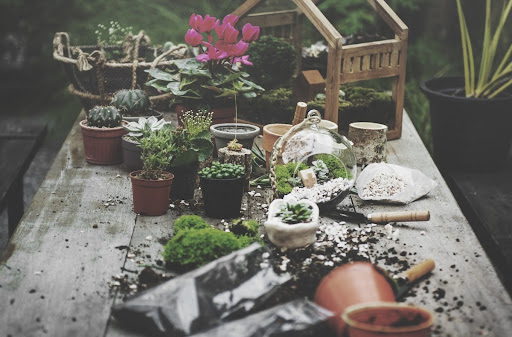While your lawn and garden don’t need much care through winter, springtime gets everything buzzing in a hurry. However, as young plants begin emerging and lawns start turning green, there are some steps gardeners need to take to ensure plant health. Later, as your green spaces grow, so will your home’s value thanks to curb appeal.
Ask for Help When Necessary
Not everyone has a green thumb. If you struggle to keep shrubs trimmed or can’t coax flowers into bloom, consider hiring a gardening service to help. Hiring a landscape professional can help you get a hold on your garden before the season gets away from you. From planning out usable garden space to reviving or weeding dormant plants, professional help can eliminate many of your seasonal challenges. Plus, you won’t have to get your hands dirty, unless you absolutely want to.
Use Prevention When Possible
While spring tends to sneak up on gardeners across the globe, planning your landscaping has multiple benefits. First, you can prevent weed growth before it starts by taking proactive measures. Hand weeding in your organic garden is often the safest way to keep overgrowth at bay. However, for especially tough weeds, consider using a homemade weed killer featuring salt or vinegar in place of harmful herbicides.
The Spruce notes that by using natural bug control — such as planting companion species near one another — you can sometimes prevent pests from creeping in. For example, planting chives, coriander or nasturtium can deter aphids, while tansy may ward off ants.
Introduce Plant-Friendly Critters
Introducing veggie garden-friendly bugs into your garden can make a huge impact on this year’s crop yield, and doing so early in the spring may mean avoiding challenges later in the season. For example, aphids are a favorite meal for ladybugs. Other beneficial insects — such as aphid midges, braconid wasps, damsel bugs, ground beetles, lacewings, soldier beetles, and tachinid flies — can protect your fruits and veggies by snacking on harmful pests, explains Good Housekeeping.
Fertilize, Fertilize, Fertilize
Giving all your shrubs, trees, flowers and edible plants nutritious and well-drained soil is crucial for a healthy garden. After a long winter, the soil likely needs a boost, so your first step before planting (or reviving the lawn) is to fertilize everything.
Depending on the nutritional profile and pH of the soil, you may need to add more nitrogen, potassium, phosphorus or other nutrients. In some cases, crumbling winter’s leftover leaves for mulch can help with fertilization. Organic fertilizers are ideal, and local options are better.
As for timing, if a soil test shows that your dirt is deficient, make sure to leave plenty of time for corrections before you plant. Otherwise, Almanac notes, you can fertilize right before planting your annual flowers and veggies.
Tend to the Lawn Later
While feeding your garden soil needs to go by your planting schedule, lawn fertilizer is a different story. You’ll need to wait until the grass greens up on its own, reawakening after the dormant winter period. Then you can add fertilizer as necessary.
You may also want to aerate your lawn, a process that involves punching holes in the dirt so roots can spread out and the nutrients, water and air can get around. Bob Vila recommends aerating cool-season grasses — like ryegrass, bluegrass and fescue — in the early spring (or early fall). If you notice symptoms like dry or compacted dirt, bare patches on the lawn, or water pooling in some areas, aeration might be the perfect remedy.
Keep Curb Appeal in Mind
As you follow the tips above, your home’s curb appeal will raise your property’s value. If the time ever comes to sell, a well-kept yard and healthy landscaping is among the top amenities in the eyes of potential buyers, raising your home’s appraisal value.
Reviving the landscape in preparation for spring is one of the best parts of keeping a garden and lawn. Though transitioning your lawn and garden from winter into spring isn’t necessarily easy, watching new life unfurl is worth all the hard work.
Photo via Rawpixel

